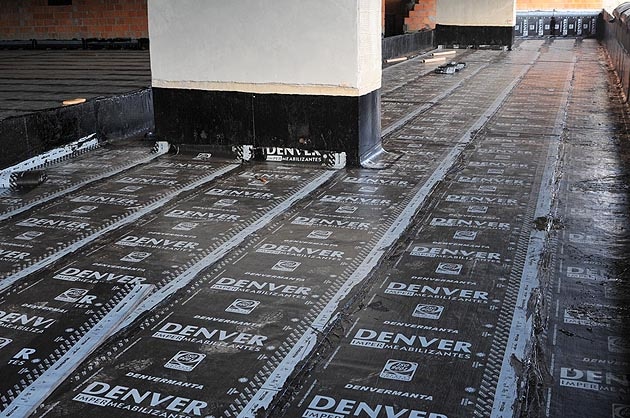Waterproofing.
Whether the structure has a low or steep slope roof system, a plaza deck with various hardscape elements and water features, or a below grade foundation system in variable soil conditions under hydrostatic pressure, the selection of the right product and its detailing in the context of the project application is of paramount importance. Attention to even the smallest detail(s) often can dramatically impact the performance of a roofing or waterproofing system.
There are many options for interior waterproofing, including concrete coating, silicate-based concrete sealers, and much more. Waterproofing paint is an acrylic formula, not all that different from ordinary wall paint. But you brush, roll, or spray it on much more thickly — one gallon covers just 75 square feet, not the 300 square feet typical with standard paint. Plastic sheets and panels are suitable as wall waterproofing only in combination with interior basement drainage systems. They don’t stop water from getting through the wall, but they do stop it from ruining things in the basement.
Exterior waterproof involves excavating all around the house to the full depth of the foundation walls, then installing a waterproof coating or membrane topped by drainage panels. The panels provide an easy path for water to flow down to an exterior French drain at the bottom of your foundation. From there, water flows by gravity — or with the aid of a sump pump — away from your foundation to another part of your property, or into a storm drain.

Ray’s Roof are professionals that provide a holistic approach to each project by addressing the roofing or waterproofing system, the supporting structure, and integration details that tie-in with enclosing or perimeter elements. Waterproofing solutions come in various forms to accommodate a multitude of needs:
Cementitious Systems.
Liquid-Applied Solvent Systems.
Preheated Liquid-Applied Solvent Systems.
Fully-Adhered Sheet Systems.
Loose-Laid Sheet Systems.
Natural Clay Types.




